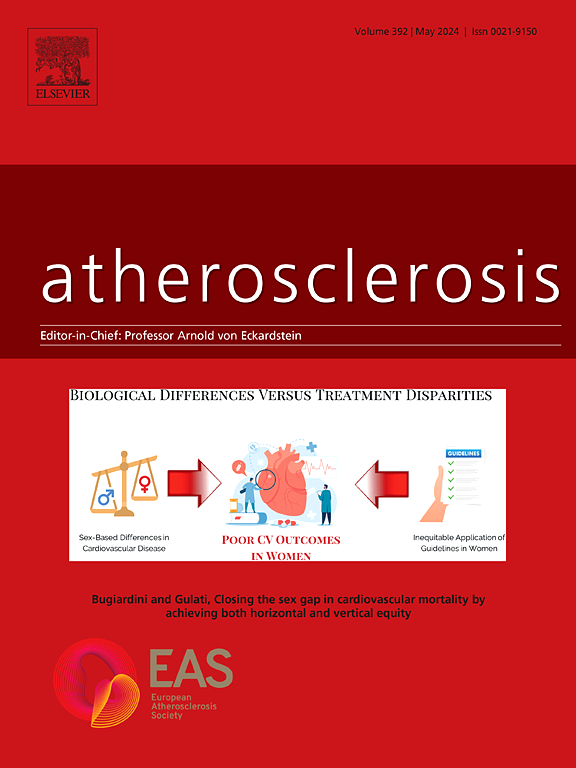Associations of dietary fatty acids with the incidence of carotid atherosclerotic plaque components: A 6-year follow-up study with serial MRI
IF 4.9
2区 医学
Q1 CARDIAC & CARDIOVASCULAR SYSTEMS
引用次数: 0
Abstract
Background and aims
The influence of dietary fatty acids (FAs) on carotid atherosclerotic plaque components remains unknown. We aimed to assess the association of dietary saturated (SFA), mono-unsaturated (MUFA), and poly-unsaturated FAs (PUFA) with the incidence of carotid plaque components.
Methods
Within the population-based Rotterdam Study, 570 stroke-free participants (mean age: 68 years; 47 % women) with subclinical carotid atherosclerosis underwent two serial carotid MRI (mean scan interval: 5.9 years). Carotid calcification, lipid-rich necrotic core (LRNC) and intraplaque hemorrhage (IPH) were evaluated. Intake of dietary FAs was assessed by food-frequency questionnaires around the time of baseline MRI. We used generalized estimating equation to investigate the association between dietary FAs and new onset of carotid plaque components.
Results
We found that a higher PUFA intake was associated with a lower incidence of IPH (adjusted odds ratio (OR) per 5 g/d increase: 0.80 (95 % confidence interval (CI): 0.65 to 0.98)). In the substitution models, a modelled higher PUFA intake at the expense of MUFA or SFA was also associated with a lower risk of incident IPH, with adjusted ORs per 5 g/day more PUFA of 0.81 (95 % CI: 0.58 to 1.14) for replacing SFA and 0.60 (95 % CI: 0.37 to 0.97) for replacing MUFA. No associations between SFA or MUFA and the carotid plaque components were found.
Conclusion
Among persons with subclinical carotid plaque, dietary FA intake is a modifiable risk factor for changes in carotid plaque vulnerability. Diet with more PUFA is associated with a lower risk of IPH in carotid plaque.

求助全文
约1分钟内获得全文
求助全文
来源期刊

Atherosclerosis
医学-外周血管病
CiteScore
9.80
自引率
3.80%
发文量
1269
审稿时长
36 days
期刊介绍:
Atherosclerosis has an open access mirror journal Atherosclerosis: X, sharing the same aims and scope, editorial team, submission system and rigorous peer review.
Atherosclerosis brings together, from all sources, papers concerned with investigation on atherosclerosis, its risk factors and clinical manifestations. Atherosclerosis covers basic and translational, clinical and population research approaches to arterial and vascular biology and disease, as well as their risk factors including: disturbances of lipid and lipoprotein metabolism, diabetes and hypertension, thrombosis, and inflammation. The Editors are interested in original or review papers dealing with the pathogenesis, environmental, genetic and epigenetic basis, diagnosis or treatment of atherosclerosis and related diseases as well as their risk factors.
 求助内容:
求助内容: 应助结果提醒方式:
应助结果提醒方式:


